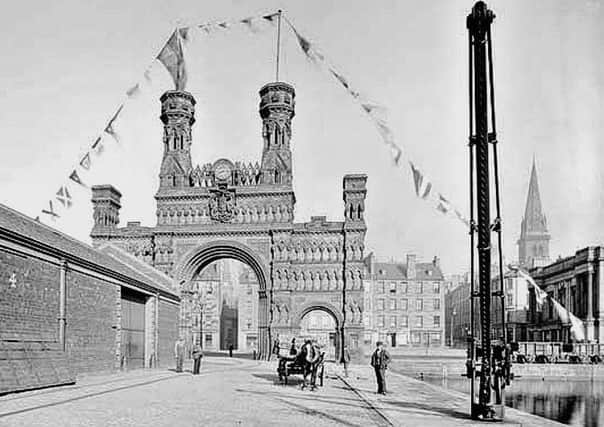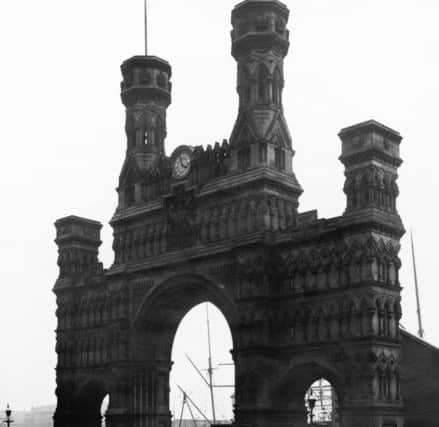Dundee's lost landmark to 'return' to city streets


Now the Royal Arch, or Victoria Arch, is to “return” to the city after it was reconstructed in digital form.
Archaeologist Dr Alice Watterson, who specialises in reconstruction and visualisation, and digital media expert Dr Kieran Baxter, who has an interest in historic built environments, have combined their skills to recreate the landmark.
Advertisement
Hide AdAdvertisement
Hide Ad

The public will be able to view the meticulously reconstructed models on their mobiles or tablets while standing on the site of the original arch at Slessor Gardens.
Using the Zappar app, which is free to download, users will scan the paving slabs which mark the 19th Century footprints of the arch with the reconstruction then to appear.
The project has been completed for Dundee’s NEoN digital art festival, which runs from November 7 to 12.


Dr Sarah Cook, co-curator of the NEoN programme, said: “This is a fantastic opportunity to explore Dundee’s lost architecture through augmented reality.
“Together, they have created digital assets that bring to life four moments in the history of the Arch, including its recreation in cardboard last summer.”
The digital arch is the latest attempt to revive the landmark which still retains a strong pull in the memories of many Dundonians.
It was built to commemorate an 1844 visit to the city by Queen Victoria and Prince Albert - the first time a monarch had visited the city since the 17th Century.
Advertisement
Hide AdAdvertisement
Hide AdStanding between King William IV Dock and Earl Grey Dock, it marked the spot where the monarch berthed at Dundee on her way to visit the Duke of Atholl and became a much-loved feature of city life.
The arch was dynamited in 1964 as part of land reclamation work required for the construction of the Tay Road Bridge.
The rubble was thrown into the docks, which were then land-filled to accommodate the slip roads for the new crossing.
A petition was set up in recent years to have the imposing arch rebuilt. In 2016, it was recreated in cardboard for a public art festival.
Dr Watterson and Dr Baxter, both who are linked to Duncan of Jordanstone College of Art, have drawn extensively on images from the archives of DC Thomson, the University of Dundee Archives and Dundee City Council for the project.
Meanwhile, a permanent exhibition on the Royal Arch is to be mounted at the McManus museum and art gallery next year.
